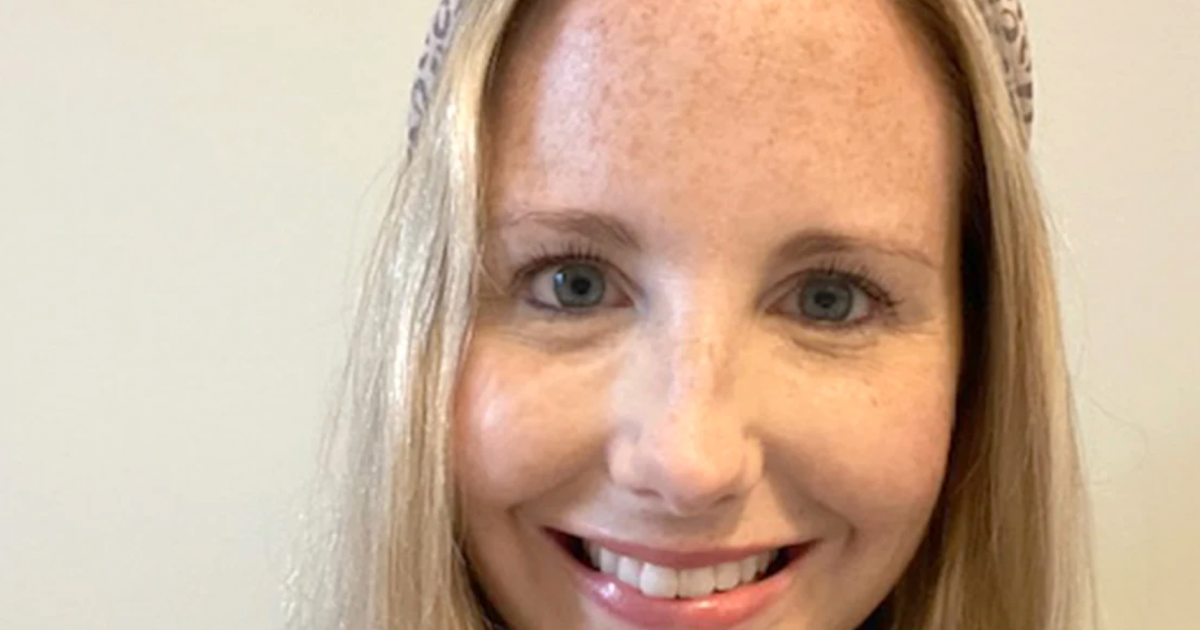Speaking Up Can Save Someone from Skin Cancer
- A Lynhurst, Ohio mom was at the park with her two daughters when a stranger voiced concern over a suspicious-looking mole on her; It wound up being melanoma.
- Lucky for the special education teacher, she caught it just in time at stage 1, when it is typically easy to treat just with surgery.
- Any mole that's changing in appearance or causing symptoms should be looked at by a dermatologist as soon as possible. Black moles of any kind are also at high risk for melanoma. Looking for irregularly shaped marks is also important.
"Finally she came up to me and she said, 'I'm really sorry if this is weird, but I've been looking at the mole on the back of your arm and I'm wondering if you ever had it checked out,'' the special education teacher told TODAY of the random occurrence last summer. The mark in question was dark brow, oval-shaped, and about the size of a penny.
Read More
Since the location of the mole was out of her daily sight, Albin wasn’t really reminded about it, therefore not really concerned. But when the doctor did a biopsy, it was stage 1 melanoma, the deadliest form of skin cancer. However, because of her angel at the park, Albin was able to catch it at an early stage before it spread, and treat it easily. A surgeon removed more skin to be sure to clear all margins, and now all she has to do is go for regular skin checksfor real this timeevery three months.
Early-Stage Melanoma
The stage of your cancer depends on how deep the melanoma has spread into the layers of your skin. Stage one is typically treated with surgical removal, but if it has spread deeper than surface-levelit means you're in a more advanced stage and may require more treatment.
Related: How is Melanoma Treated After Surgery? The Landscape of Therapies Explained
Fortunately, stage one is very treatable and has very favorable metrics in terms of cure rate. Your doctor will be able to decipher if you're eligible for removal upon assessment of the depth of your cancer. If your melanoma is less than 0.8 mm in depth, your dermatologist may do an in-office excision.
Your dermatologist will perform a wide excision surgery using local anesthesia to remove the melanoma and surrounding tissue. The area is closed with stitches, and samples of the excised tissue are sent to a pathologist to review. The pathologist will confirm whether the entire melanoma was removed by checking the edges of removed tissues for signs of cancerous cells.
In 90 percent of stage one melanomas, this will conclude treatment. Regular follow-ups with your dermatologist are necessary to ensure that the melanoma has not returned, as Albin will hopefully be doing.
Learning How to Look for Suspicious Moles
For skin cancer patients and basically everyone else out there, regular self-checks on your skin are important to find skin cancer early. If you're high-risk, it's especially vital.
Examining Your Skin for Melanoma: Remember ABCDE
Dr. Cecilia Larocca, a dermatologist at Dana-Farber Cancer Institute, recommends looking at your skin once a month for anything suspiciousand using the acronym ABCDE as a checklist:
- Asymmetrical moles: If you drew a line straight down the center of the mole, would the sides match? If not, your mole is considered asymmetrical
- Borders: The edges of your mole look irregular, jagged, or uneven; can also stand for bleeding
- Colors: Multiple distinct colors in the mole, including patches of pink, brown, grey, and blackbut could be any color
- Diameter: Larger than 6mm, about the size of a pencil head eraser
- Evolution: Anything that's changing over time such as gaining color, losing color, pain, itching, changing shape, etc…
Dr. Larocca emphasizes that any mole that's changing in appearance or causing symptoms should be looked at by a dermatologist as soon as possible. Black moles of any kind are also at high risk for melanoma.
If you notice any of these changes, see your dermatologist for a full skin assessment. Early detection of melanoma, the deadliest form of skin cancer, improves your chances for successful treatment, just like Melissa Albin’s. We can’t always count on a chance occurrence with a dermatologist, so get on the phone with your doctor and scheduling a painless exam today. It could save your life.
Learn more about SurvivorNet's rigorous medical review process.


